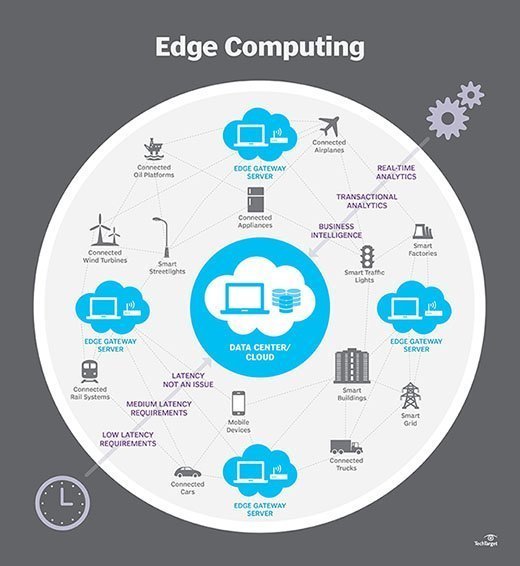Internet of things
The term "Internet of things" (IoT) refers to real-world physical items equipped with sensors, computing power, software, and other technologies that communicate with one another and exchange data with other systems and devices over the Internet or other communications networks. Devices just need to be connected to a network and be individually addressable; the term "internet of things" has been criticized for implying that they must also be connected to the public internet.
Due to the convergence of several technologies, including ubiquitous computing, affordable sensors, sophisticated embedded systems, and machine learning, the field has advanced.
The Internet of things is enabled by traditional domains such as embedded systems, wireless sensor networks, control systems, automation (including home and building automation), and others individually and jointly.
IoT products are most often associated with the "smart home" concept in the consumer market. These products include gadgets and appliances like lighting fixtures, thermostats, home security systems, cameras, and other home appliances that support one or more common ecosystems and can be controlled by gadgets linked to that ecosystem like smartphones and smart speakers.
How Does Edge Computing Work?
Edge computing, which uses a distributed computing architecture, moves data processing and storage closer to where the data is created in order to enable quicker access to insights and save time and money.
Additionally, the use of edge devices—from gateways and computing infrastructure to Internet of Things (IoT) gadgets like smart cameras, mobile point-of-sale kiosks, medical sensors, and industrial PCs—for quicker, near real-time actionable insights at the data source is causing an exponential growth in the amount of data generated and collected.
Edge computing advantages:
Bringing certain data processing, analysis, and storage closer to the point of data generation and away from the cloud can have a number of important advantages.
Reduced latency and increased performance. Moving data processing and analysis to the edge improves system response time, allowing for quicker transactions and better user experiences that may be essential in near real-time applications, such as autonomous car operation.
The bandwidth and expenses associated with transmitting and storing huge volumes of data can be decreased by limiting the quantity of data delivered over the network to the cloud.
Increased dependability Networks can only send a certain amount of data at once. Being able to store and analyse data in places with poor internet connectivity
From the edge to the cloud:
The cloud continues to be crucial as a central data store and processing hub, even though edge computing offers enterprises a previously unheard-of potential to unlock the value in data.
The illustration below demonstrates how edge devices for data collection, computing, storage, and networking work together to support enterprises in making the most of data at each location.
Use Cases for Edge Computing
To deploy tens of thousands of edge computing solutions, Intel collaborated with numerous industry partners and end users. The four edge computing use cases listed below demonstrate how Intel has assisted businesses in the retail, industrial, educational, and healthcare sectors in enabling new experiences and enhancing operations.
Edge computing offers businesses and service providers a previously unheard-of chance to realize the value of their data. A corporation can maximize the value of data at every stage with the appropriate partner. With tens of thousands of edge deployments already producing tangible value, hundreds of market-ready solutions, standards-based technology, and the most developed developer ecosystem in the world, Intel can assist you in bringing the intelligent edge to life.







.jpg)
0 Comments